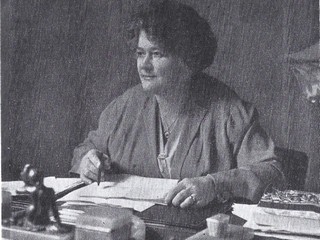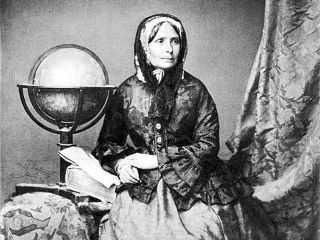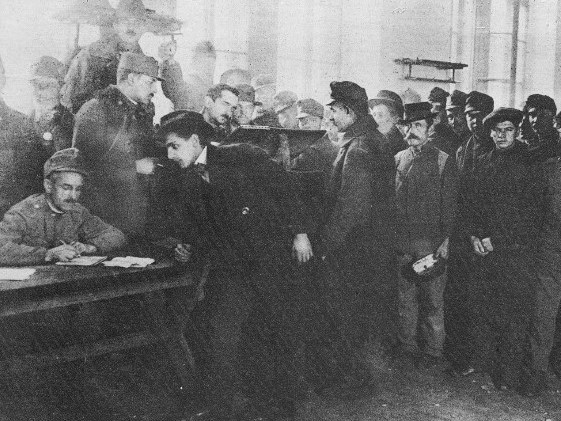
Detail of an illustration from The Book of the City of Ladies, completed in 1405. Though an earlier period than the study here (which addresses the period from 1500 to about 1850), women’s participation in manual labor is longstanding.
We often assume that households in the European past relied on men for their income. Long-term historical wage series, which have informed some of the most influential economic history research, are based only on men’s wages. But when we look closer at the relationship between men and women working together, even in typically male industries such as construction, we see large numbers of women working for wages often as high as, and sometimes exceeding, those of men. Including women dramatically alters our understanding of wellbeing and gendered divisions of work in the European past.
Wages and living standards – of whom?
Wage data are one of the fundamental tools of the economic historian, and have informed many of the key debates and stories in economic history.[1] But who do these studies reflect? Wage studies have typically relied on wages paid to male day laborers – almost everything we know (or think we know) in the long term is based almost entirely on men’s work. However, men were not alone in earning wages – women were also an important source of household income.
Though recognized for some time,[2] this has not been translated into mainstream wage calculations that include women’s contributions. These issues have been left largely to feminist economic historians or researchers with a particular interest in gender. When the issue of changes in family labor force participation and work patterns has made it to the mainstream, it couched in terms of consumption and aspirational shifts; the changes in the everyday life of the household retreat to secondary importance.[3]
These omissions are not trivial, especially as the relationship between men’s and women’s labor was not consistent over time, space, or type of work. Sara Horrell and Jane Humphries find that women’s and children’s monetary contributions to British household income ranged from nothing to almost half over the late eighteenth and nineteenth centuries.[4] Simply adding some percentage of men’s wages to the household budget to reflect women’s earnings does not capture true developments in household wellbeing or living standards.

Figure 1: Locations of Malmö, Kalmar and Stockholm. (Source: Kathryn Gary. Base map from Knowledge Quest, Inc.)
As a part of my PhD thesis, I investigate the differences between men’s and women’s wages and working patterns in early modern Sweden, relying on data from three cities and towns in current-day Sweden; Malmö, Kalmar, and Stockholm. Sweden was a fairly rural and agricultural economy much like the majority of Europe before the 19th century, making it a good test case for preindustrial Europe. My dissertation makes the case that when women’s work is considered alongside men’s, a very different picture of living standards and the household economy becomes clear.
Women and wages in Sweden
Figure 2 shows the development of women’s and men’s real wages in construction labor. The wages are presented in the number of ‘baskets’ – the amount of consumer goods needed to feed and house a family of four for one year – that a worker could purchase with a year’s worth of day work. A value of 1 means that a worker could just support his or her family – 2 means the worker could feed the household twice over, and a value under 1 indicates hunger. As can be seen, both women’s and men’s real purchasing power was slightly improving, but fairly stagnant over the period. Importantly, when we look at men’s and women’s earnings together, we can see that total household income has the potential to be far above what is implied by men’s earnings.
But also important is the fact that women’s wages are available for much of the same period as men’s, for women doing the same work. True, the series is not as long or as complete. But the data that we do have are strong evidence for women’s participation in the pre-industrial waged economy and confirmation that despite some difficulties,[5] data for women working is collectable.
Why did women earn less?
Figure 2 shows that women worked alongside men, but it is clear that women earned less. It is difficult to explain what factors were driving the gender wage gap. The primary debate in economics is whether wage differences were (and continue to be) due to discrimination or whether they were based on differences in women’s and men’s productivity, and are thus the result of market forces.
In the context of historical unskilled labor, the argument is whether women earned less because they were not as strong as men and so were less able to perform physical tasks, or if women were always paid a certain percentage of men’s pay and/or kept from certain tasks because they were women, regardless of individual productivity.[6]
Older historiography connects higher wages for women to the labor shortage following the Black Death.[7] In this narrative, women had bargaining power – limited, of course; they only are able to negotiate in desperate times.
Women’s relative wages in Sweden
Figure 3 shows the relative wage in Sweden for women and men employed in the building sector, doing tasks such as digging or assisting masons. The figure here is disaggregated by data source so that we are comparing men and women directly who were working together on the same building sites. Women’s wages were quite high compared to men going into the seventeenth century, but declined later. Sometimes women were even able to out-earn men during the early seventeenth century.
Some of the women’s high wage levels can be connected to historical events. The data from Kalmar, an average Swedish town with about 2,000 inhabitants around 1700[8] (the purple series here) is more complete than the data from other sources. Kalmar was previously a border town between Sweden and Denmark; the Kalmar War was fought between these two countries from 1611-1613, and the high wage ratio of 1.2 in 1614 is likely in response to the need to rebuild coupled with a fall in the supply of men. Kalmar continued to face high labor demands: peaks in women’s relative wages as high as 1.33 in the late 1640s coincide with the years directly following a fire that devastated the town in 1647.
These high wages argue against a story where women were always less productive than men and so could not earn as much. At the same time it argues against a story of pure discrimination for the same reason, though it does suggest a reversion to a discriminatory state after the building crises were over, when women’s relative wages fell.
Even given the unusual circumstances that help explain some instances of very high relative wages, this decrease in women’s relative payment through the seventeenth century is dramatic, especially as it occurs over the course of only a generation or so. While the cause is not clear here, a closer look at women’s participation in the labor force can help reveal some of the mechanisms.
Women as a part of the labor force
As we saw above, women were important paid manual laborers, especially in periods when construction labor was in high demand. Table 1 shows the number of payments made to women working as a percentage of all payments to unskilled workers in Kalmar and as a percentage of all payments in the sample, compared to the number of workers being paid. The 1620s and 1630s were the biggest years for construction, likely due to the extensive repair work necessary after the War. Women regularly comprised about half of the unskilled labor pool, and even when skilled (male) labor is included in the sample they are still a strong proportion of all builders.
When building declined women made up a smaller proportion of the labor force. Though not visible in these figures, the number of people employed on each individual project is also lower when overall building demand declines. This is an important feature for understanding women’s relative wages: when women were working in large groups alongside men, their wages were often very similar to men’s. It is when they were working in smaller groups, or apart from men, that their wages were lower. This is evidence for the same kind of agency that is implicit in the story of women’s wages rising after the Black Death: women can demand higher or equal wages when their labor is particularly needed, but they have a harder time sustaining this equality when employers have other options.
Women’s work days

Records from Kalmar Cathedral. Anna Dikerska is at the top of the list of unskilled workers (hantlangare). (Source: Kathryn Gary.)
A closer look at individuals’ work patterns also gives insight into the differences between men’s and women’s work. In Kalmar we can individually trace workers and account for how many days they worked every year. There is one individual in the data who works far more than anyone else in the entire data set – a woman, Anna Dikerska (see figure 4). Because she is clearly an outlier, we look at women’s annual work days both with and without her included.
Anna’s unusual work habits are visible in the original sources, even without any statistical analysis. The original data is organized into weekly payments, which record both men and women together. This list is organized in order of days worked in the week, with those who worked the most days topping the list. This position is almost always held by Anna Dikerska, working 6½ days each week.
Table 2 shows the average number of days worked in a year by unskilled men, all women, women without Anna Dikerska included, and skilled men. Skilled men worked the most, which is reasonable, as they invested considerable resources learning their trades. What is less expected is that women, while fewer in number than unskilled men, worked more than their male counterparts in an industry that relied on physical strength. This could be due to several things – for instance, it could indicate that unskilled men had more options than women for earning an income on a casual basis, while women were more restricted in their work opportunities. But it is clear that women were a regular presence in the construction industry.
Conclusions
Women’s work in the past was complex and changing. It is easy to apply categories of ‘men’s’ and ‘women’s’ work and to extend our sense of what is ‘traditional’ deep into the past. But in this case, when we are able to suspend our assumptions and dig deeper into the evidence the data tell a less expected story; women in Sweden worked in physical occupations, alongside men, and for similar wages. They worked especially hard when the need was highest, and women’s wages only fell away from men’s when work became less regular and men and women weren’t employed together.
Perhaps more compellingly for those with less interest in gender history, accounting for women’s work dramatically changes the picture of what household living standards looked like in the long run, and provides strong evidence for what is intuitively clear: we cannot truly understand the past if we continue to discount the experiences or contribution of half the adult population.
For more information see the author’s website
Anmerkungen
[1] See R. C. Allen, 2009. The British Industrial Revolution in Global Perspective. Cambridge: Cambridge University Press.
[2] See I. Pinchbeck, 1930. Women workers in the industrial revolution, in which she comments on the shift in household labor market participation during the British Industrial Revolution; women were pushed from jobs they had previously dominated, which increased their financial dependency on men.
[3] See J. de Vries, 2008. The Industrious Revolution. Cambridge: Cambridge University Press.
[4] S. Horrell and J. Humphries, 1995. “Women’s labour force participation and the transition to the male-breadwinner family, 1790-1865”. Economic History Review 48(1).
[5] See J. Humphries and C. Sarasua, 2012. “Off the Record: Reconstructing Women’s Labor Force Participation in the European Past”. Feminist Economics, 18(4), for a discussion on some of the difficulties associated with identifying women’s work in the historical record.
[6] J. Burnette, 2008. Gender, Work, and Wages in Industrial Revolution Britain. Cambridge: Cambridge University Press; S. Bardsley, 1999. “Women’s work reconsidered. Gender and wage differentiation in late medieval England.” Past and Present 165, pp. 3-29.
[7] J. L. van Zanden, 2011. “The Malthusian Intermezzo: Women’s wages and human capital formation between the late Middle Ages and the demographic transition of the 19th century.” History of the Family 16, pp. 331-342.
[8] L. Andersson-Palm, 2000. Folkmängden I Sveriges socknar och kommuner 1571-1997. Stockholm: Nykopia Tryck AB.










[…] Income and the household: women’s work and wages in early modern Sweden; von Kathryn Gary (Link) […]